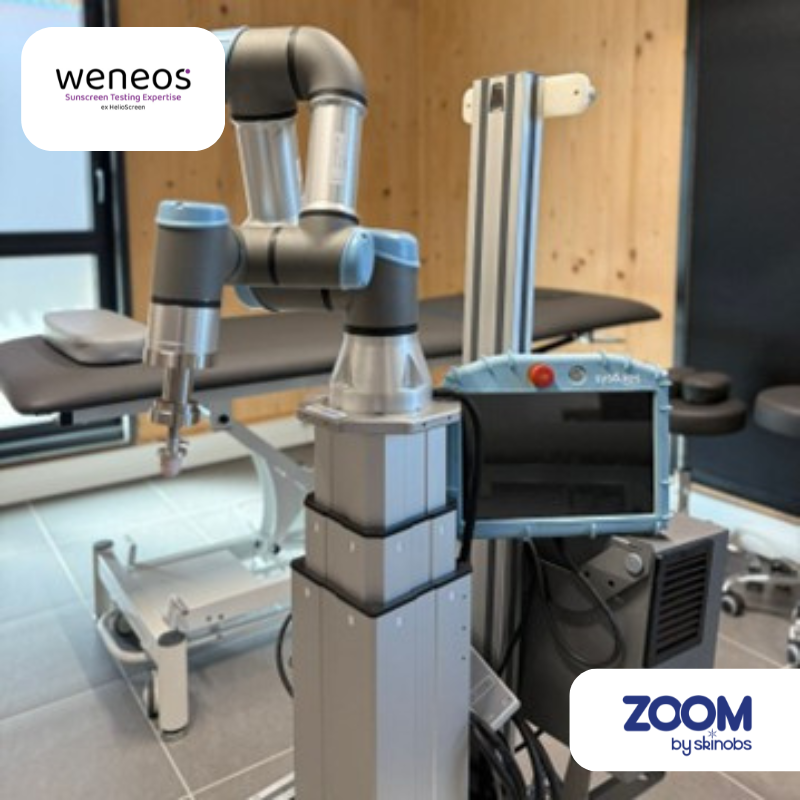Nowadays, there are different sunscreen testing procedure for claiming the Sun Protection Factor – (SPF), UVA Protection Factor (UVAPF), Critical Wavelength (CW), Water Resistance (WR), etc. Fortunately, mainly according to ISO (International Organization for Standardization), standards are available in order to harmonize these methods worldwide such as:
- In-Vivo SPF according to ISO 24444 (published),
- In-Vivo UVAPF according to ISO 24442 (published),
- In-Vitro UVAPF – CW according to ISO 24443 (published),
- In-Vivo WR procedure according to ISO 16217 (publication in 2020),
- In-Vivo WR percentage calculation according to ISO 18861 (publication in 2020),
- In-Vitro SPF according to ISO 23675 (under development),
- In-Vivo/In-Vitro Hybrid Diffuse Reflectance Spectroscopy SPF – UVAPF according to ISO 23698 (under development).
Among all these methods, the In-Vitro SPF is strongly required by the industry and governmental organizations delivering results equivalent to the In-Vivo SPF according to ISO 24444 method. As evidence, the degree of protection should be measured using standardized, reproducible testing methods and take photo-degradation into account as recommended by the European Commission [1].
In-Vitro SPF Method Principle
The In-Vitro SPF method in progress at the ISO level (project ISO 23675) includes new requirements and appliances to ensure the reliability of the results. The method was validated by Cosmetics Europe (CE) in a recent publication [2] according to the different simplified steps:
- Topographic parameters of the substrates shall be controlled and respected a control chart for both PMMA molded HD6 (1.3 mg/cm²) and PMMA sandblasted SB6 plates (1.2 mg/cm²).
- The temperature of the interface substrate/sample shall be controlled.
- To ensure reproducibility, automated spreading is the only way by using a robotic arm with specific characteristics such as the HD-SPREADMASTER.
- After a drying step and prior to any UV irradiation, the acquisition of the initial UV absorbance spectrum by a spectrophotometer (including specific calibrations).
- From the initial UV absorbance spectrum using correction factors, a single UV exposure dose D (MED/h) is applied by using a solar simulator (including specific calibrations).
- Finally, after UV exposure, a second In-Vitro absorbance measurement is required in order to calculate the final In-Vitro SPF using mathematical adjustment.
Acceptance of In-Vitro SPF Method
One of the problems raised for the In-Vitro SPF method validation was that no acceptance criteria existed among the ISO TC217 (Technical Committee for Cosmetics) WG7 (Working Group for Sun Protection Test Methods) consensus.
To respond to this issue, after a huge work from different parties (ISO TC217 WG7 Ad Hoc group, CE, statisticians, experts, etc.) during several years, an international consensus was proposed and accepted years ago by the ISO/TC217/WG7 including a balance between the statistical requirements, the cost efficiency and the realistic feasibility by checking:
- The ascertain minimal method bias (matrix effect, overall bias, etc.).
- At least 95% of the paired SPF values for 24 products, derived from the 3 in-vivo test institutes (at least 5 test subjects per laboratory) and the 3 in-vitro testing labs (both in a blinded fashion), fit within the upper and lower limits of a funnel across the full range of labeled SPF categories (SPF 6, 10, 15, 20, 25, 30, 50 and 50+).
Conclusion
Today, all barriers are solved for the alternative In-Vitro SPF method according to the ISO 23675 project, including:
- The technical limits (the method is reproducible and correlated to the In-Vivo SPF values),
- The fulfillment of the ISO acceptance criteria (as explained in a publication about the CE method [2]),
- The established international majority consensus.
To summarize, this most advanced In-Vitro SPF method is based on the UV transmittance measurement process using a multi-substrates approach (molded and sandblasted PMMA plates) with correction factors, a robotic spreading and a UV exposure step.
Read the complete article: FOCUS#2 Solar Testing – Skinobs
http://www.helioscreen.fr
44 rue Léon Blum, 60100 Creil, France
+33(0)3 44 55 17 91






